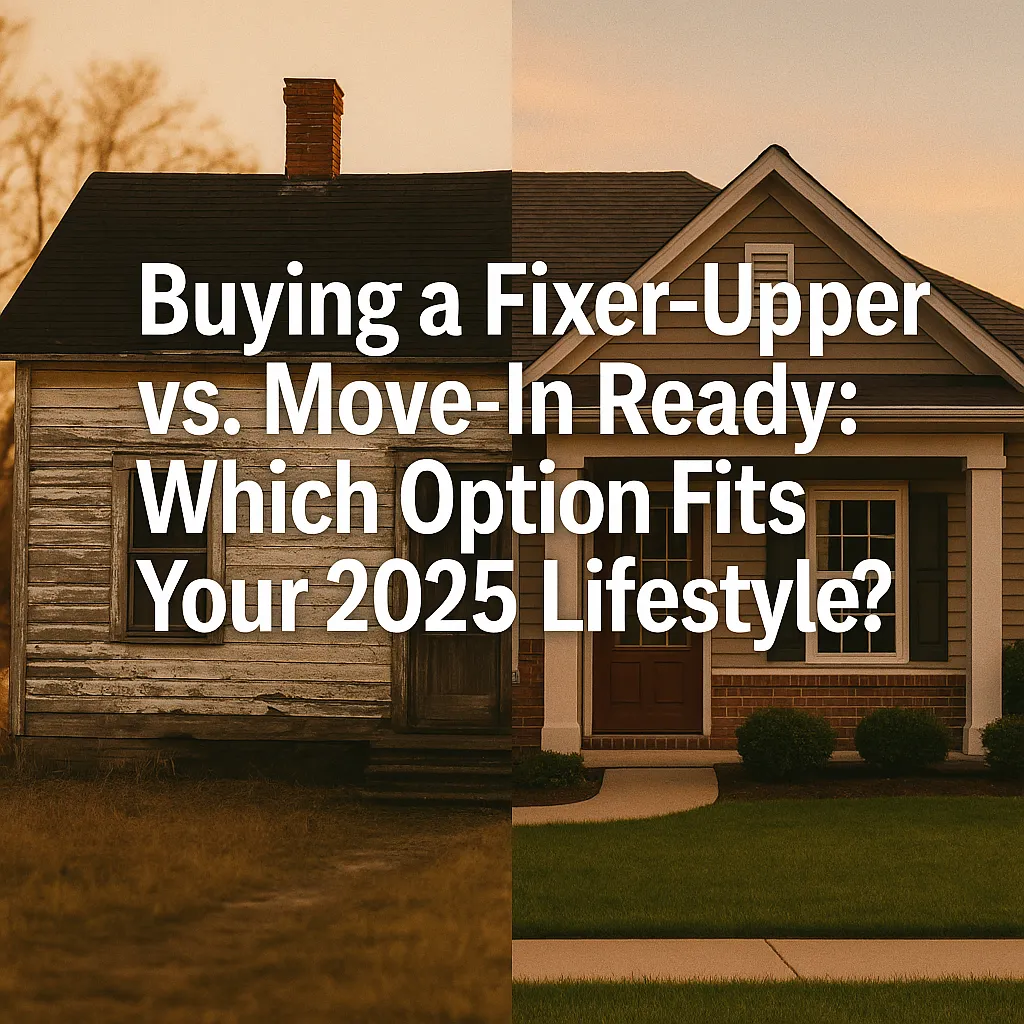
Buying a Fixer-Upper vs. Move-In Ready: Which Option Fits Your 2025 Lifestyle?
Buying a Fixer-Upper vs. Move-In Ready: Which Option Fits Your 2025 Lifestyle?
Smart Real Estate Decisions with Hanson Capital Homes
Introduction: Paint Chips or Plug & Play?
Imagine this: You walk into a house with shag carpet, avocado-green tile, and a kitchen straight out of 1974. Your friend sees a “money pit.” You see potential.
But then again, who wouldn’t love walking into a freshly painted, turn-key beauty where the only thing you need to do is pick where the couch goes?
In 2025, many Chattanooga Valley and North Georgia buyers are asking the same question:
“Should I buy a fixer-upper or go move-in ready?”
At Hanson Capital Homes, we’ve walked clients through both paths—and each has its rewards and risks. This guide will help you figure out which option truly fits your lifestyle, budget, and long-term goals.
🛠️ What Is a Fixer-Upper?
A fixer-upper is a home that needs repairs, updates, or renovations before it’s livable or up to modern standards. The repairs may be cosmetic (paint, flooring) or structural (foundation, electrical, roof).
💡 Local Insight: Many pre-1980s homes in Rossville and Lookout Mountain fall into this category, often at a steep discount.
🏠 What Is a Move-In Ready Home?
A move-in ready home requires little to no immediate work. It’s updated, clean, and usually already passes modern code requirements. You can literally bring your boxes and start living.
💡 Hot Spots: East Brainerd and Ooltewah are known for newer or recently updated homes that are truly plug-and-play.
Fixer-Upper: Pros & Cons
✅ Pros:
Lower price upfront (usually 10–30% below market)
Customization freedom—design it to your taste
Equity growth—forced appreciation through upgrades
Less competition—most buyers avoid work
❌ Cons:
Time and money sink if you underestimate the repairs
Financing challenges (may require FHA 203(k) or rehab loan)
Unexpected surprises behind walls
Permit or contractor delays (especially post-COVID)
Move-In Ready: Pros & Cons
✅ Pros:
No stress over repairs or permits
Faster closing and move-in timeline
Easier to finance with any loan type
Perfect for buyers with limited free time
❌ Cons:
Higher price tag—you pay for convenience
Less customization (unless you renovate down the road)
More buyer competition, especially in hot zip codes
May not appreciate as quickly as improved fixer-uppers
Featured Snippet: Fixer-Upper vs. Move-In Ready in 2025
Fixer-Upper: Cheaper upfront, equity potential, but more work and uncertainty
Move-In Ready: Turn-key and easy, but pricier with limited personalization
Which is right? If you have time, skills (or a good contractor), and vision—go fixer. If you value speed, simplicity, and stability—move-in ready wins.
Which One Matches Your 2025 Lifestyle?
Lifestyle Factor Better Fit
Tight on time or energy Move-In Ready 🛋️
Comfortable with renovations Fixer-Upper 🔨
First-time buyer Move-In Ready
Looking for investment flips Fixer-Upper
Need to move quickly Move-In Ready
Love design & DIY Fixer-Upper
Want predictable costs Move-In Ready
Flexible timeline Fixer-Upper
Hanson Capital Pro Tips
Always get a home inspection—even for move-in ready homes.
Use a local contractor for fixer-uppers to estimate costs before closing.
Consider a 203(k) loan or Fannie Mae HomeStyle loan for major repairs.
Negotiate seller credits if obvious repairs are needed.
Talk to your agent (us!) about local resale trends. Some neighborhoods respond better to fixer-uppers than others.
